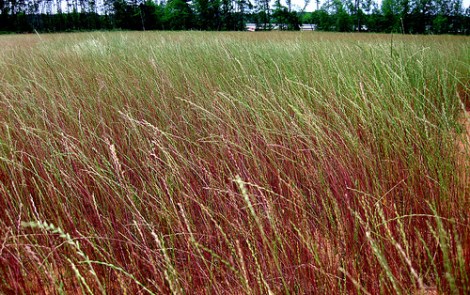We’re accustomed to odd stories of raw materials being stolen for resale. Copper, for instance, has been a popular target of thieves over the past several years due to its ubiquity and spiking market price. The higher the value of a commodity, the more likely it is to be stolen.

SterlicBasically a big field of money.
Even if that commodity is grass. From the AP:
With drought drying out grazing land and driving up hay prices, some ranchers in New Mexico have started cutting neighbors’ fences or leaving gates open so their cattle can graze on greener pastures.
Authorities in other drought-stricken states say they’ve seen similar fence cuttings, along with thefts of livestock and other materials as ranchers struggle to stay in business. In some cases, stealing a neighbor’s grass may be the only way for a rancher to feed his livestock, but victims say their livelihood is being threatened too.
That’s passive grass theft, letting your cattle munch it into nonexistence. There’s also active grass theft (a term commonly used by law enforcement).
In Colorado, for example, the Larimer County Sheriff’s Office has received four reports of hay thefts in two months, the most it has seen in years, spokesman John Schulz said. In one case, $5,000 worth of hay was taken from a field over the Labor Day weekend.
“We typically see an isolated case here and there, but nothing like this,” Schulz said.
For at least one cop, it’s meant a shift in his perception of a classic American archetype.
“We are seeing a pattern. It’s hard to monitor since we are busy trying to catch DUIs and other crimes, so we need more eyes and ears,” said Luna County Sheriff Raymond Cobos, whose New Mexico county borders Mexico and sits just west of El Paso, Texas. …
“We see people with cowboy hats transporting cattle and hay all of the time, and we think nothing of it,” Cobos said. “But now if we see them at 3 a.m. in the morning … we have to stop and think: Is there something wrong?”
If you can’t trust a midnight cowboy, who can you trust?



